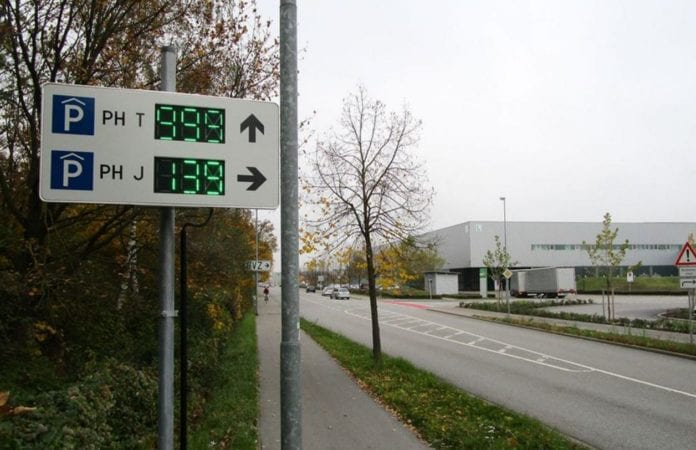Audi’s Ingolstadt, Germany, factory is its largest and the second largest in Europe, producing 566,646 cars in 2015. It is where the auto manufacturer produces its A3, A4, A5, Q2 and Q5 models and is considered by the company as its “most important location.” The site covers an area of more than 2,700,000 square meters – equivalent to more than 300 soccer pitches, and houses 43,192 employees. All of those employees must find parking in a growing lot of more than 5,000 spaces encompassing an area of 830,000 square meters. According to a case study, Audi turned to Urbiotica, a Spanish company founded on wireless sensor networks, to create a smart parking lot to reduce congestion and create a more efficient work environment.

A sensor solution for smart parking
Urbiotica’s proposal was to install 22 wireless parking capacity sensors to detect vehicles entering and leaving each parking sector in order to communicate free spaces in each area and guide vehicles to them. Because the lot had a limited number of entrances and exits, the project could be deployed with 22 sensors for 5,000 spaces.
The wireless sensors count the number of vehicles that enter and leave each parking area, and based on the total number of spaces defined, occupancy data is calculated and sent in real-time to digital panels located at entry points. The goal is to help guide drivers to areas with free spaces.

The smart parking solution uses three elements, including a sensing system, data transmission elements and software management platform. According to the Spanish company, the smart parking solution offers four main benefits, including greater rotation and occupancy of car park; reduction in traffic flow produced by looking for parking; increased worker and visitor satisfaction and experience; and improved environmental quality.
The solution was implemented with the help of Urbiotica’s German partner MSR-Traffic.
“Our customer was looking for a solution that would allow Audi’s employees in Ingolstadt to find free parking spaces when going to work,” said MSR-Traffic CEO Harald Schmitt. “Since most parking areas are open spaces, the first problem we found was that we could not count vehicles like in a closed garage (with wired sensors located under the roof). The second problem was the entry and exit of the lanes as we did not have any local power source. This meant that wireless counting sensors were the best solution for this application.”

